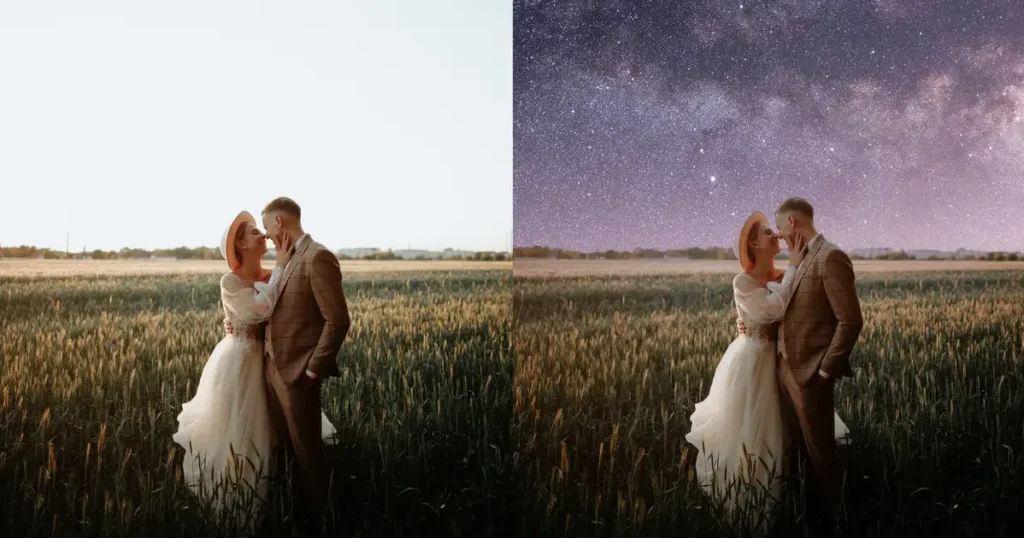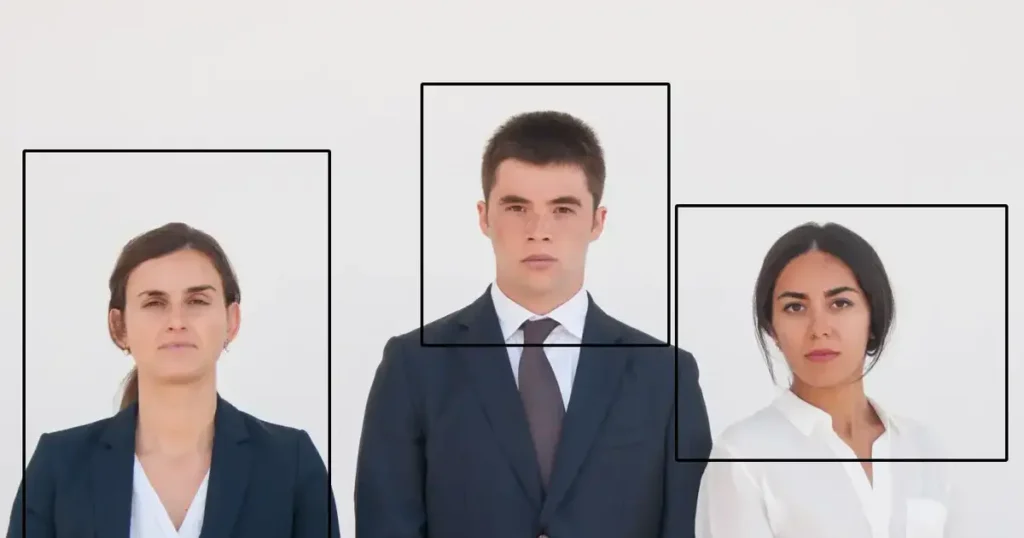Photographing newborns is no easy task. Unlike adults, babies don’t pose, stay still, or wait for the perfect lighting. Capturing newborn portraits that are crisp, well-lit, and full of detail requires skill, patience, and sometimes, a little help from technology.

Here are some common struggles photographers face:
- Low Light & Noise Issues – Newborn shoots often take place indoors, where natural light is limited—especially in winter. Raising the ISO to compensate for dim lighting can introduce unwanted grain, making soft baby skin appear textured and rough. For example, you might normally find a noisy, blurry image that lacks the crisp details when you zoom in on the baby’s face in a professional portrait, which could be frustrating sometimes.
- Focus & Motion Blur – Babies are constantly moving: stretching, yawning, wiggling their tiny fingers. Capturing sharp facial details like eyes, eyelashes, or dimples can be a challenge. Even slight movement during the shot can cause blur. Usually it happens to photographers who would like to capture a close-up of a newborn’s sleepy smile, but only find the slight twitch of an eyelid results in an unfocused shot that looks soft and out of focus, this kind of case happens a lot in real life shooting.
- Overexposure from Flash – Direct flash is often used to compensate for low light but can cause unnatural brightness, wash out delicate skin tones, and make the baby’s face look flat. For some families, they might receive their newborn photos, only to notice that the baby’s soft pink undertones are lost, replaced by a pale, overexposed glow that lacks natural warmth.
Beyond lighting and focus, newborn portraits come with a set of unique challenges related to facial features, hair, and overall aesthetics.
Evoto AI Photo Editor – Faster Edits, Finer Control
Here are some additional issues photographers may face when capturing newborn portraits:
- Stray Hairs & Bald Spots – Newborns often have fine, wispy hair that doesn’t always lie flat. Some babies are born with full heads of hair, while others have uneven patches or bald spots, which can look inconsistent in portraits.
- Dry or Flaky Skin – Many newborns have peeling or dry skin, especially around the nose, forehead, and hands. While this is a natural part of a newborn’s skin development, it can appear distracting in high-resolution images.
- Asymmetrical Features Due to Sleeping Positions – Since newborns spend most of their time sleeping, they may develop slight asymmetries in their face due to prolonged head positioning. This can make facial proportions look uneven in photos.
- Uneven Skin Tone & Redness – Babies’ skin is delicate and can appear patchy, with red blotches, jaundice, or mild baby acne. These color inconsistencies can make editing tricky, as overcorrecting may remove the natural softness of baby skin.
- Milk Residue or Drool on the Face – Newborns frequently have milk residue on their lips or tiny drool patches on their cheeks, which can be difficult to remove naturally during a photoshoot. The perfect shot of a baby’s adorable yawn is ruined by a small patch of milk residue on the lips. AI touch-up tools can remove the distraction without affecting the natural texture of the baby’s mouth.
Post-Processing as a Solution
Many of these issues can be corrected through AI face editing, which enhances clarity, adjusts lighting, and restores natural textures. Instead of relying on perfect conditions during the shoot, post-processing tools can bring out the best in newborn portraits.
For example, photographers could use AI facial editing to sharpen a newborn’s eyes, even out skin tones, and restore the softness of natural light, creating a portrait that looks professional and timeless.
Use Evoto AI Facial Editor For Baby Photography
Capturing newborn portraits is both an art and a challenge. Babies don’t stay still, lighting isn’t always ideal, and small details like motion blur, skin redness, or fine hair imperfections can make editing difficult. AI-based face editing tools like Evoto AI solve these problems effortlessly, delivering professional-quality results in just a few clicks.
Evoto AI Photo Editor – Faster Edits, Finer Control
Here’s how AI enhances newborn photography:
AI-Powered Clarity Enhancements
Many baby portraits suffer from soft focus or motion blur, making it difficult to see fine details like eyelashes, dimples, or the soft texture of baby skin. Evoto AI sharpening tool recovers lost details while maintaining a natural look—perfect for images where slight movement caused a blur. AI precision ensures that a baby’s face remains crisp and detailed, even in low-light conditions.
Auto Brightness & Contrast Adjustments
Low-light conditions often lead to noisy or overexposed photos. Babies’ delicate skin tones can be easily washed out by harsh flash or look dull in dim lighting. Evoto AI automatically adjusts brightness and contrast based on skin tones, ensuring natural warmth and softness. The Dodge & Burn tool refines shadows and highlights, giving newborn portraits a balanced and professional look without requiring manual exposure correction.
Skin Retouching for Flawless Yet Natural Baby Skin
Newborns frequently have red blotches, peeling skin, or minor blemishes, which can appear distracting in high-resolution portraits. The skin retouching tools smooth the skin while preserving natural texture—unlike aggressive filters that create an artificial look. Features like “AI Unify Face Complexion” help correct uneven skin tones, ensuring soft, flawless baby skin without over-processing.

Hair Editing for Soft and Polished Looks
Newborns can have stray hairs, bald patches, or fine baby hair that appears inconsistent in photos. The AI hair tools refine hairlines, remove stray hairs, and even fill in sparse areas for a more polished look. The Hair Gaps tool subtly enhances fine baby hair without making it appear unnatural.
Backdrop and Background Cleanup
A cluttered background can distract from the baby’s face in portraits. The background cleaning tools help smooth out solid backdrops, remove background distractions, and enhance the overall composition. The “Clean Solid Backdrop” feature is especially useful for studio shots, creating seamless, distraction-free baby portraits.

By leveraging AI face editing tools, photographers can fix lighting issues, sharpen details, and enhance newborn portraits with minimal effort—ensuring that every captured moment is picture-perfect.
Step-by-Step Guide – How to Edit Newborn Portraits with Evoto AI Facial Editor
This step-by-step guide will show you how to edit newborn portraits step by step, using a real case to solve a common issue in baby photography editing.
Fixing a Blurry, Underexposed Newborn Portrait
Suppose we capture a close-up of a newborn’s face, but the image has motion blur, noise from low lighting, and washed-out skin tones due to flash.
Evoto AI Photo Editor – Faster Edits, Finer Control
Here’s how to fix it using Evoto AI.
Step 1: Enhance Clarity & Fix Motion Blur
Issue: The baby’s face is slightly blurry, making fine details like eyelashes and dimples hard to see.
Open the image in Evoto AI.
Navigate to “Color Adjustments” > “Detail” > “Sharpen” tools and adjust the clarity slider to recover lost details.
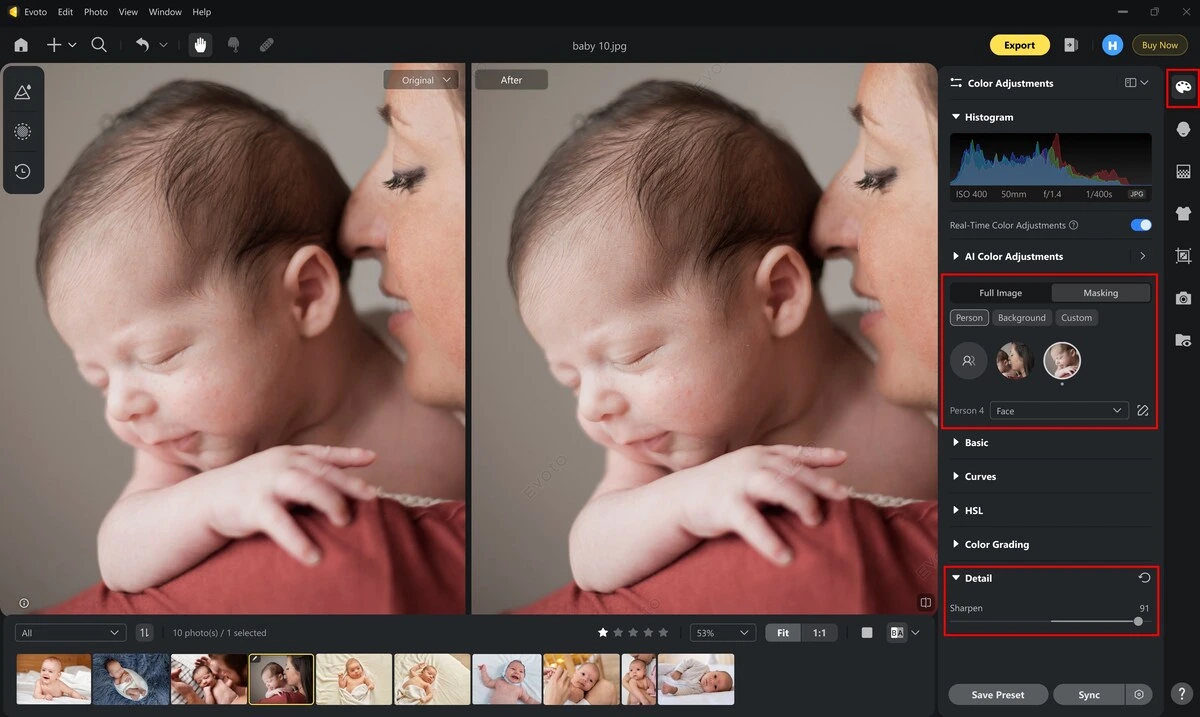
If motion blur is present, increase the AI sharpening effect slightly to bring back sharpness without adding noise.
📌 Pro Tip: Keep sharpening subtle to avoid an overly processed look.
Step 2: Adjust Brightness & Correct Exposure
Issue: The photo appears too dark or overexposed due to flash.
Go to the “Color Adjustments” panel. Find “Basic” section.
Adjust “Exposure” and “Contrast” to restore balance while keeping soft shadows.
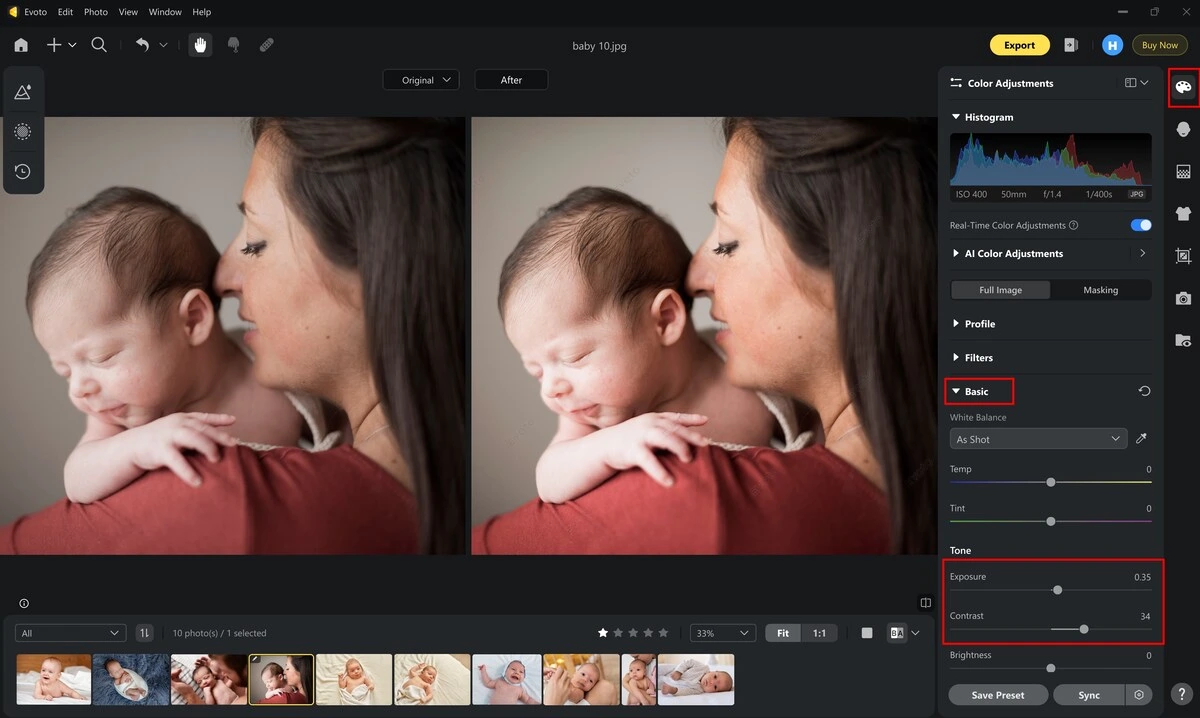
Use Dodge & Burn in “Portrait Retouching” panel to selectively lighten dark areas and reduce overexposed highlights.
📌 Pro Tip: Adjust exposure gradually to keep the baby’s natural skin glow intact.
Step 3: Smooth Baby’s Skin Without Losing Texture
Issue: The newborn has flaky skin and redness, making the portrait look uneven.
Go to “Blemish Removal” section in “Portrait Retouching” panel. Move the sliders to erase skin flakes or red pimples from the baby face.
Select “Skin Retouching” section and apply “Textured Smoothing” to remove dry patches while maintaining a soft, natural look.
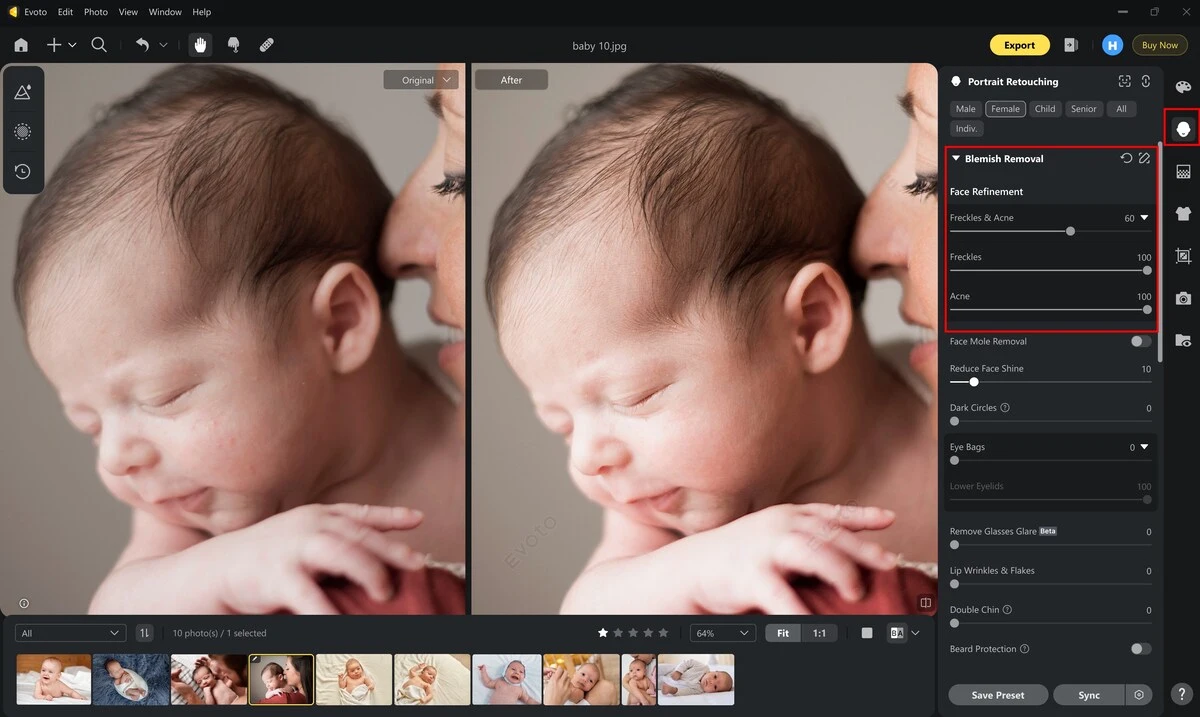
If redness or blotches are present, use “AI Unify Face Complexion” to even out skin tones.
Step 4: Fix Baby’s Hair for a Clean & Polished Look
Issue: The baby has stray hairs or a bald spot, making the portrait look uneven.
Navigate to “Hair Retouching” and use “Smooth Hair” or “Remove Stray Hairs” to eliminate flyaways.
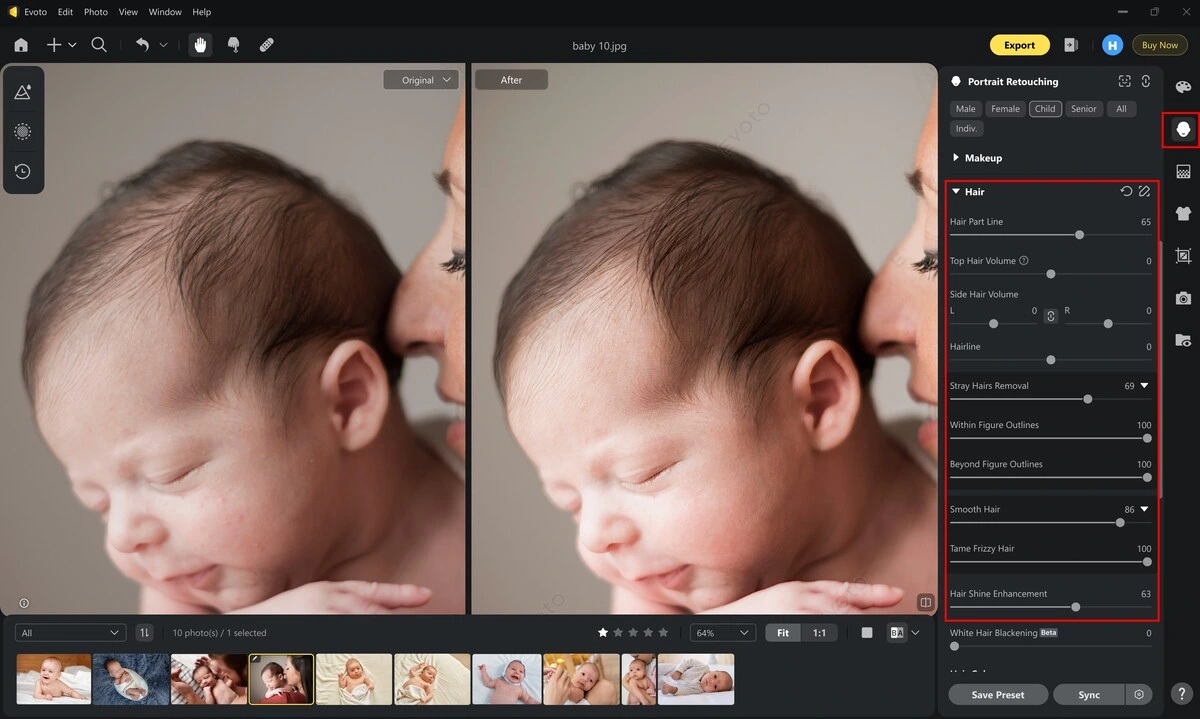
If the baby has a bald spot, apply Hair Gaps Fill to subtly blend it in.
Final Touch: Export the Edited Portrait
Once the clarity, lighting, skin, and background are refined, export the final image:
Format: Export as TIFF for the highest quality.
Color Profile: Ensure it is in sRGB for accurate colors across all devices.
Resolution: Keep at high resolution for crisp prints.
The End
In conclusion, newborn photography is challenging, especially when creating newborn portraits. Lighting, focus, and a baby’s unique features pose many hurdles. But AI photo editors are game-changers. With features for clarity, skin, and hair, photographers can easily enhance baby photos. Whether you’re an expert or a novice, using AI in newborn photography can transform your work. Don’t let difficulties stop you. Embrace AI and elevate your newborn portrait work.


